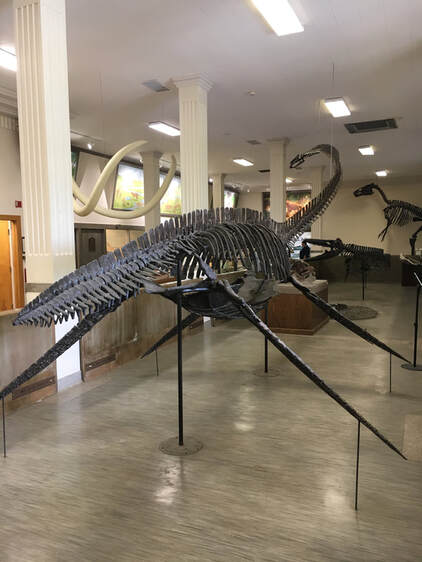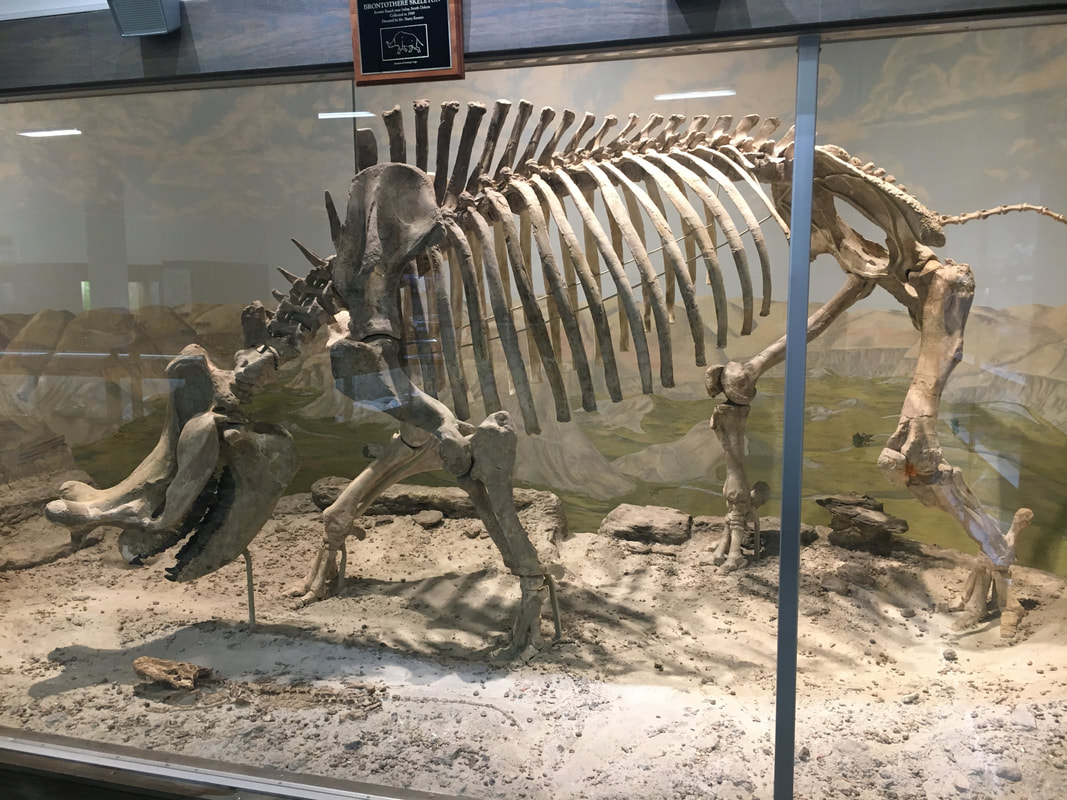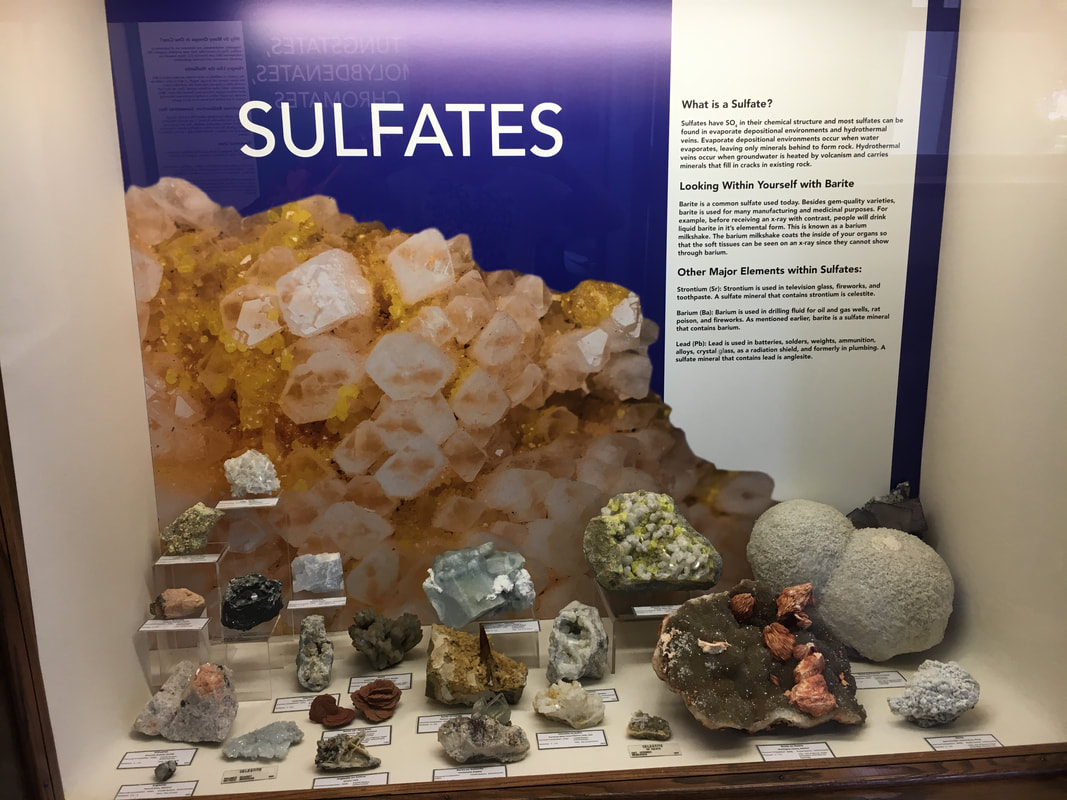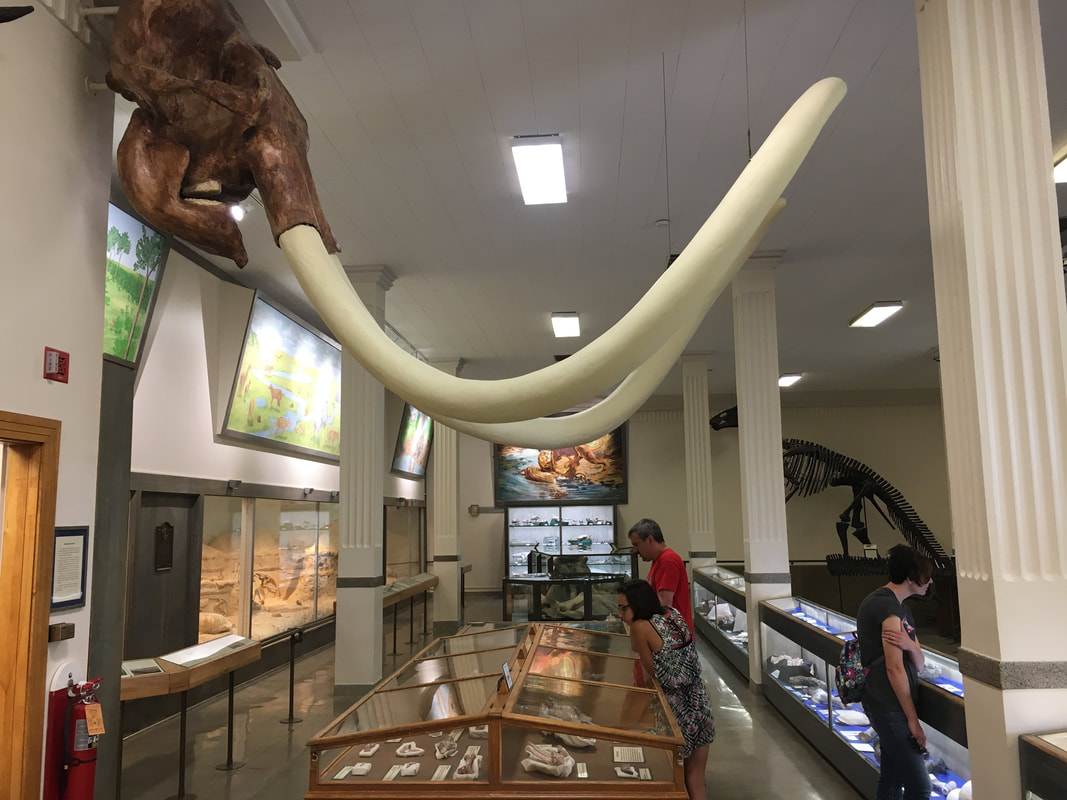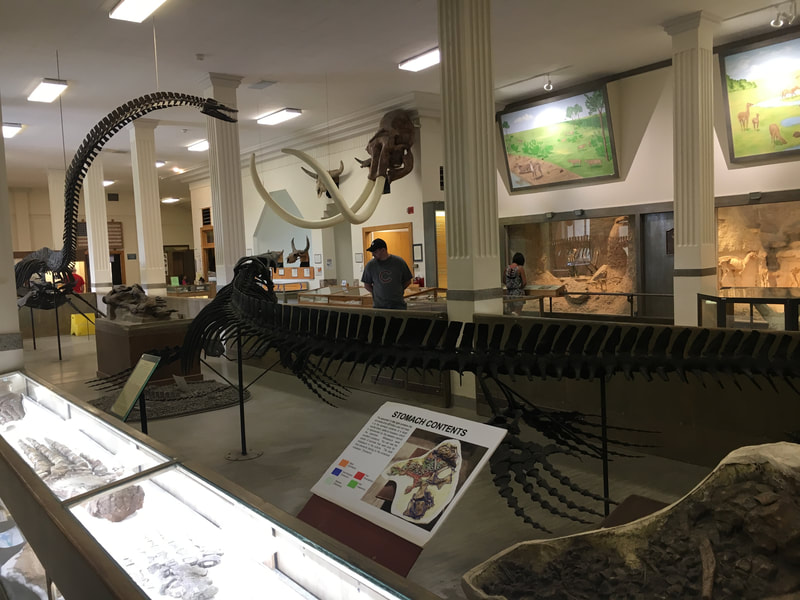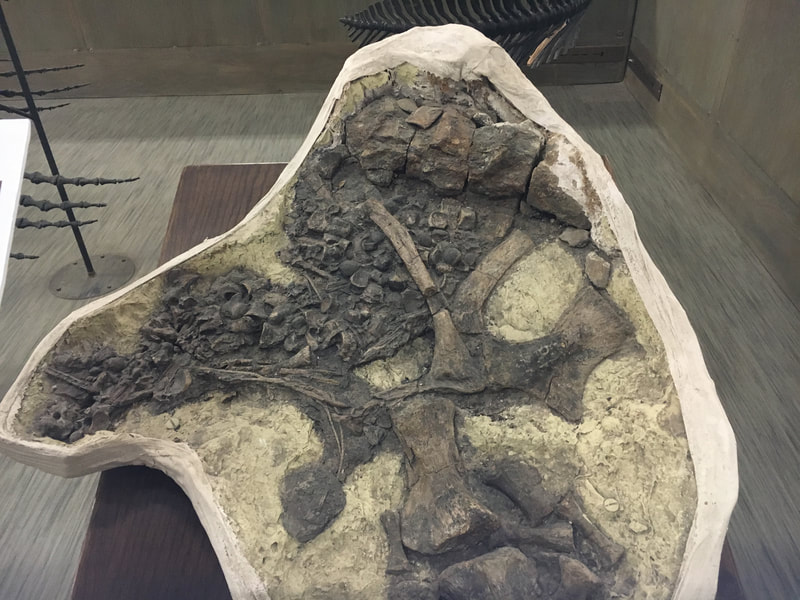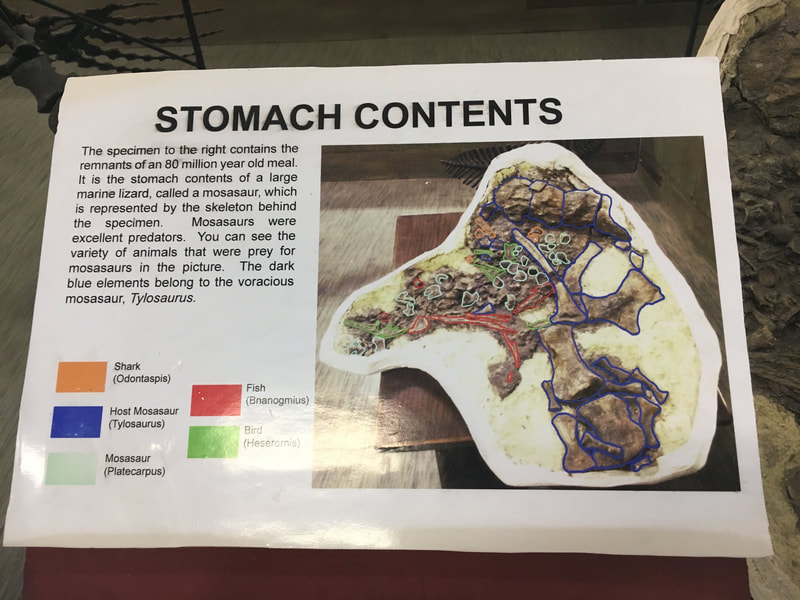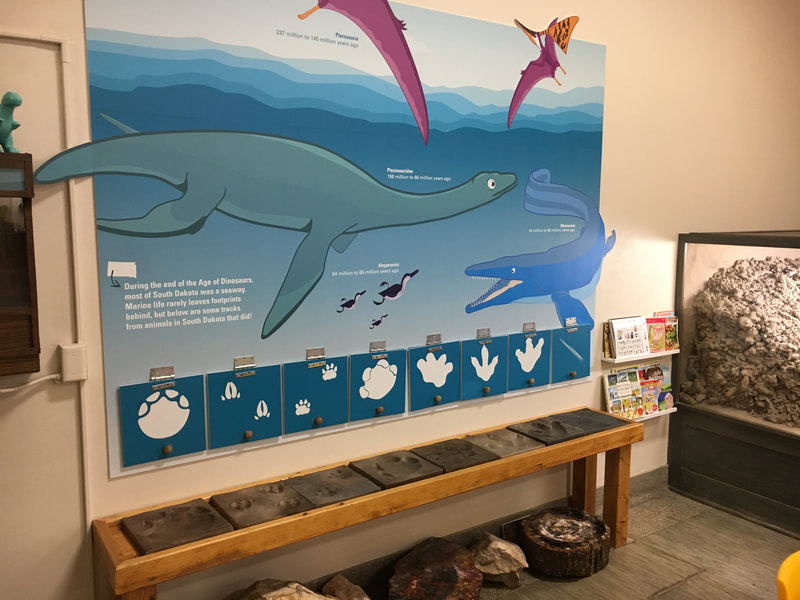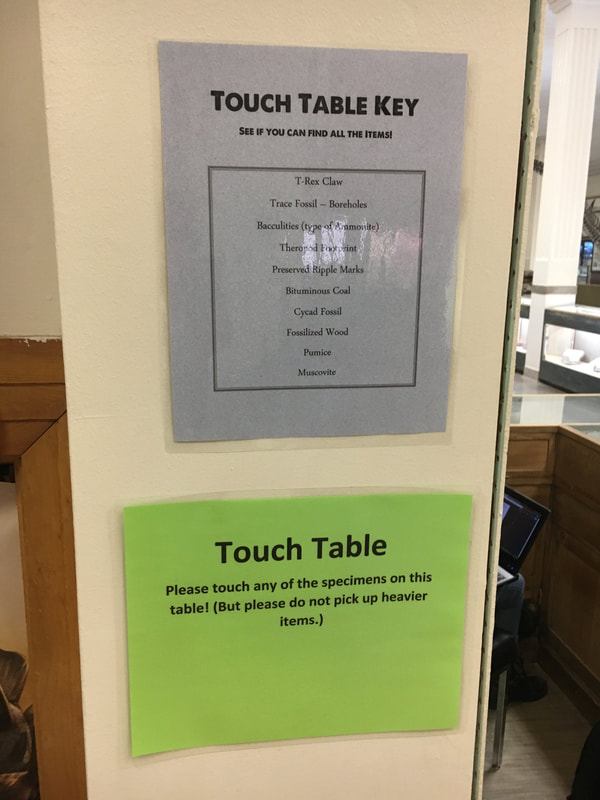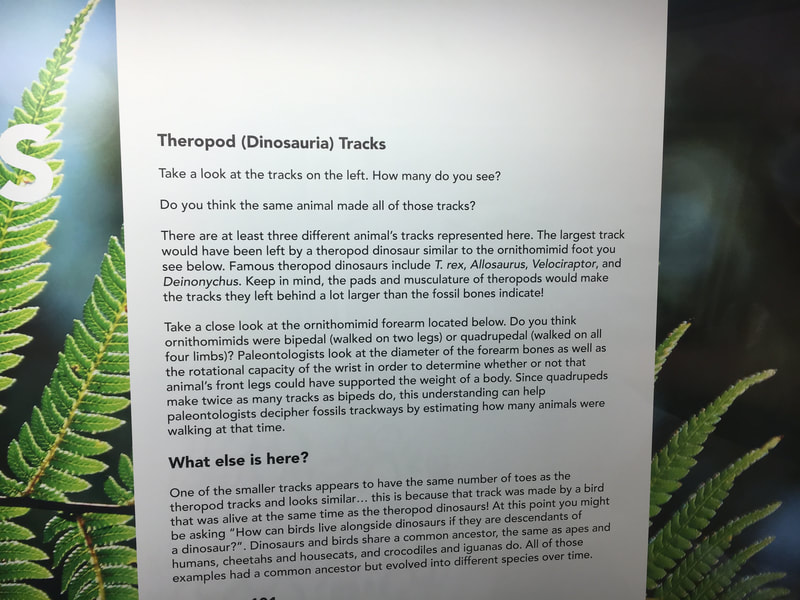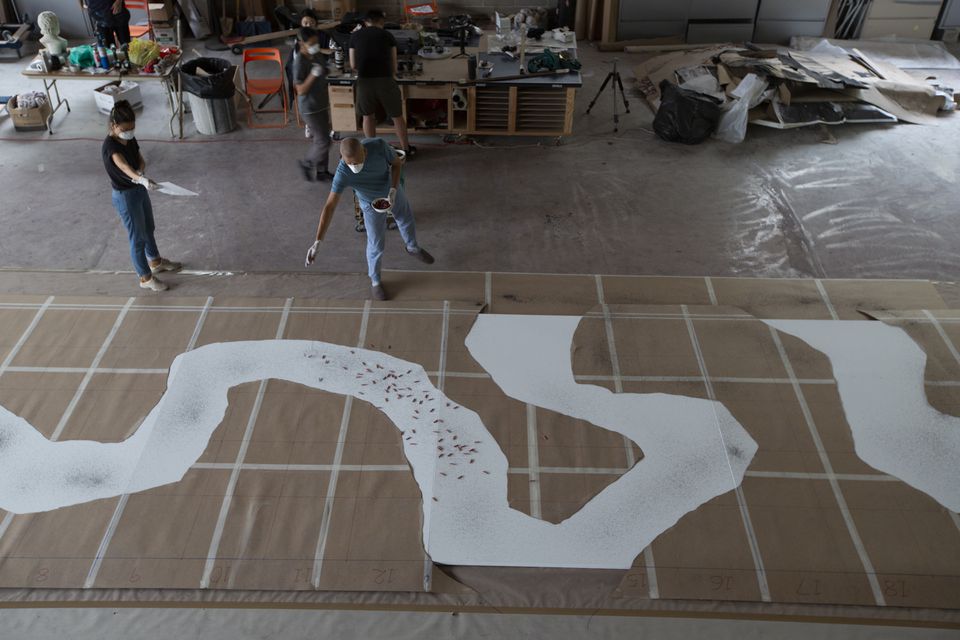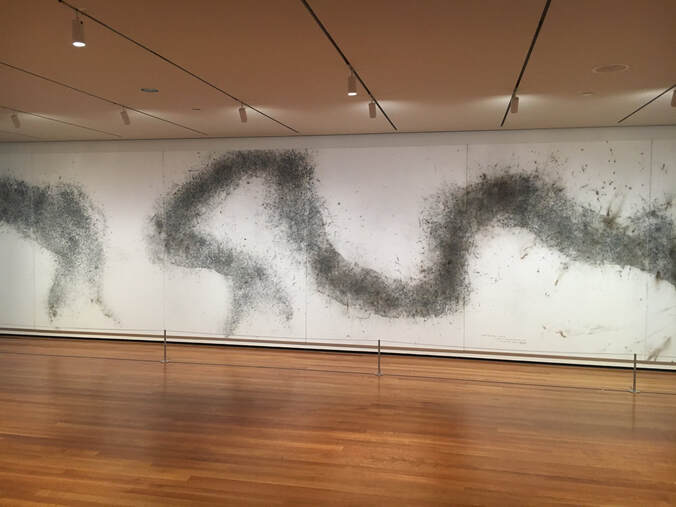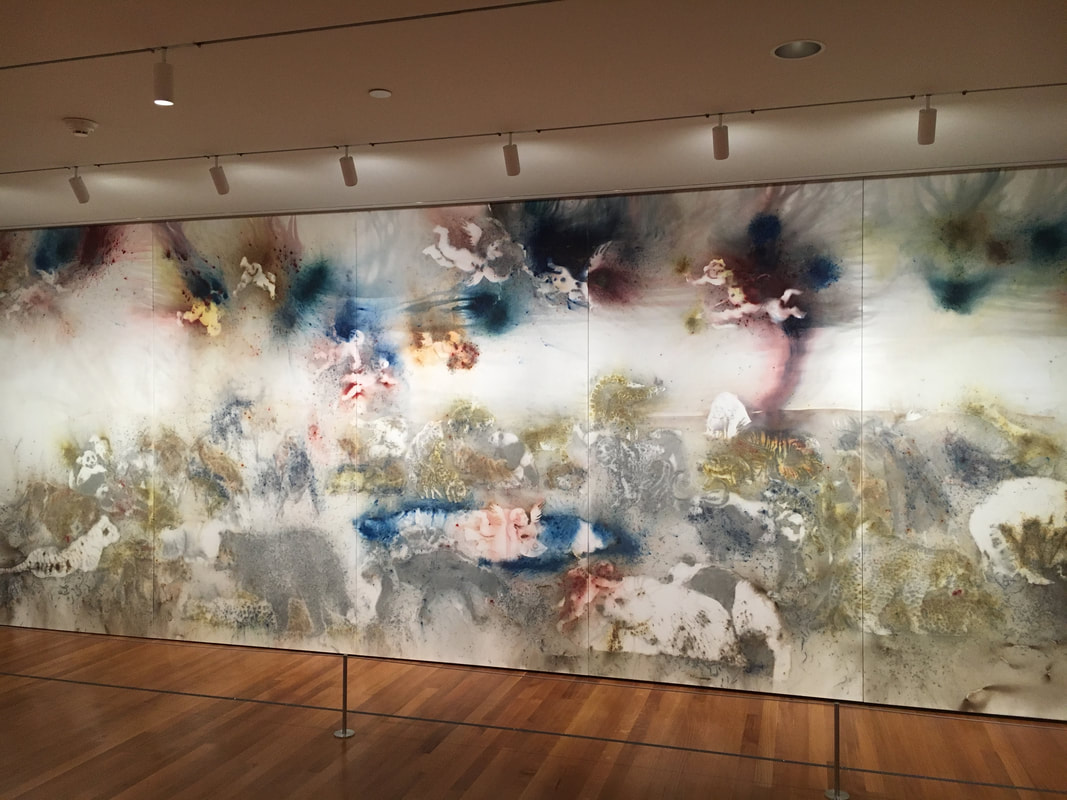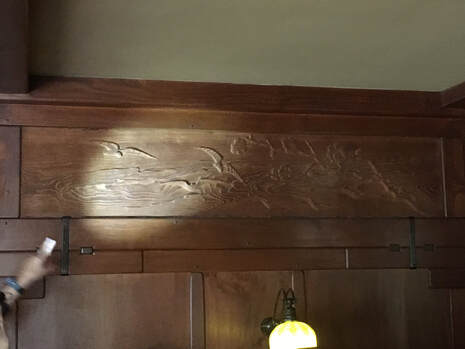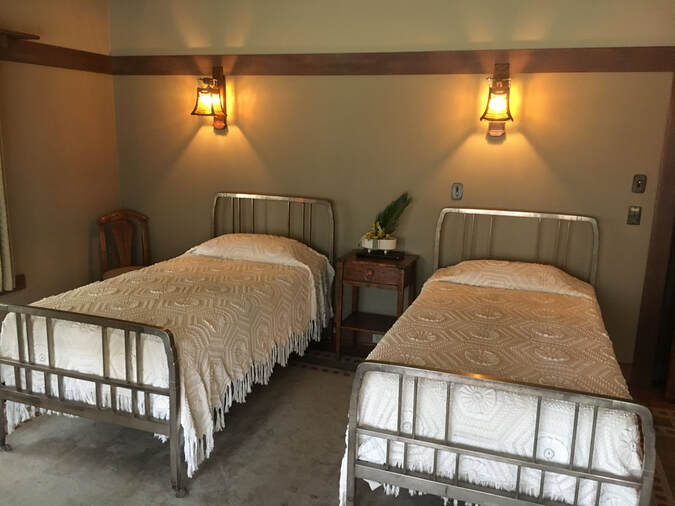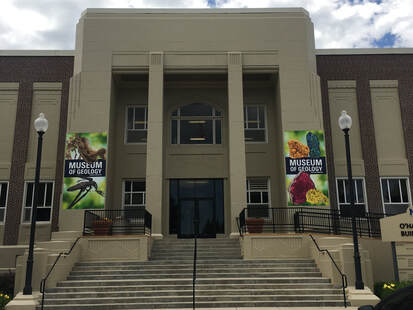 Entrance to Museum of Geology at SD MINES, O'Harra Building Entrance to Museum of Geology at SD MINES, O'Harra Building I recently visited a small but mighty museum in Rapid City, South Dakota—the Museum of Geology located in the South Dakota School of Mines & Technology (SD MINES). It’s a gem of a museum (pardon the pun). I share here highlights, pictures and describe why it’s an excellent example of a visitor-focused space that provides ideal conditions for learning and enjoyment. The SD MINES is a public research university established in 1885 with a focus on the industry of mining; it’s evolved into a leading science and engineering university in the region. The museum opened the same year as the school with the loan of a professor’s collection of over 5000 mineral and fossil specimens. In 1923 the museum opened to the public and like today, with no admission fees. In 1899 the first curated specimen was added--an alligator snout discovered in the Badlands (a fossil-rich region in SD consisting of 244,000 acres of hills, mountains and grasslands) by Professor O’Harra while on the school’s first paleontology expedition. The museum focuses on two areas: 1) South Dakota and Northern Plains fossils and 2) minerals from South Dakota and around the world. Dinosaurs and More The dinosaurs are really impressive; there’s nothing like large-scale skeletons of historic beasts to capture visitors’ imaginations. They almost embrace you when you first enter; though small in comparison to other Natural History Museums, it feels BIG. My favorite display is the huge plesiosaur in the middle of the gallery—a marine reptile of the Mesozoic era with large paddle like limbs and a long neck. This defines the space and creates a wow factor. But the rest of the museum lives up to the wow. Including the mammoth head, also discovered in South Dakota (several mammoth remains have been found in the area, mostly in Hot Springs which has an active paleontological excavation site and museum). The dinosaur skeletons and other fossils are arranged spectacularly in full view, some are in dioramas, others in glass cases. What’s impressive is that almost all the specimens are from South Dakota, discovered by paleontologists on expeditions affiliated with the school. This makes the museum unique—it’s a research institution that openly shares its discoveries with the public and encourages engagement and learning. Some of the discoveries on display include a near-complete alligator skeleton found in 1924 in the White River Badlands by three professors on an expedition. Another is the Triceratops head added in 1928; it was found in Hell Creek in SD and is now South Dakota’s state fossil. One novel discovery visitors love to learn about is the mosasaur skull, found by a local schoolboy in 1945. It was collected by one of the school’s professors and displayed shortly thereafter. The Minerals: Bright Cases & User-Friendly Labels The gem and mineral collection is spectacular. It includes minerals from all over the world, and includes meteorite specimens. The display cases are well done; they are bright with excellent descriptions. I like the user-friendly labels written in conversational language. They are relatable and help visitors make connections to real life. Take the sulfates exhibit label for instance, it reads “Looking within yourself with Barite”, and describes how barium drinks are used by some people for x-rays to help doctors see contrasts. I compare this museum’s mineral exhibits to the Natural History Museum near me; sadly even though a large, respected museum, its gallery is dark, with even darker cases and labels that use academic language that are hard to relate to. A Model for Small Museums The Museum of Geology gets rave reviews on Trip Advisor and Yelp. Both give it a solid 4.5 out of 5 stars. In addition to the tremendous displays, bright and inviting interiors, it has a kid zone with activities for children to engage with, explore and touch. The ‘Touch Table’ is my favorite, visitors can hold and touch different fossils, rocks and minerals. The museum's visitor-focused approach creates conditions that invite visitors to explore, establishing the groundwork for learning and discovery. For instance, there are more ‘do touch’ labels than ‘don’t touch labels, including signs that encourage visitors to open drawers, view and explore ('don’t touch’ labels combined with hovering security guards create barriers to engagement). Conditions that encourage visitors to engage, explore and feel welcome include:
If you ever find yourself in the area of Rapid City, SD I encourage you to visit. The museum is about a 45 minute drive to Mount Rushmore and the beautiful Black Hills of SD. If you can’t visit, check out the Museum’s online exhibits (below). More to Explore
0 Comments
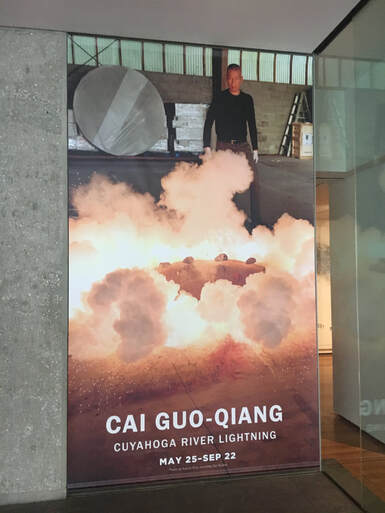 Poster for Cai Guo-Quiang's Exhibition at Cleveland Museum of Art Poster for Cai Guo-Quiang's Exhibition at Cleveland Museum of Art The Cleveland Art Museum is impressive. It lives up to Insider’s list of the top 25 museums in the United States; Cleveland’s Art Museum ranks #2 (Grebey, 2016). I visited this past June and was not disappointed. The permanent collection is phenomenal, but so is the exhibit Cuyahoga River Lightning by Cai Guo-Qiang. The exhibit is in a small gallery, but with big scope. When walking in you see three very large canvases and you smell something—a faint burnt smell. What is it my husband asked? It’s the scent of gunpowder. It’s because Cai Guo-Qiang’s works are created by using controlled explosions using a mixture of charcoal and saltpeter—gunpowder. Cai creates his work on long stretches of Japanese paper placed on the floor with pieces of cardboard stencils on top to shape his planned art work (image below). Cai invests considerable research and planning into all of his works, long before he gets to the final stage which is when he lights the fuse; it’s then an explosion happens and his work of art remains. How appropriate that the Museum chose Cai Guo-Qiang to create an artwork using fire to commemorate the 50th anniversary of the Cuyahoga River fire—an event in 1969 when the Cuyahoga River caught fire due to the chemical pollutants from factories. Cuyahoga50 commemorates the historic fire (though it was one of several) by celebrating water and the progress made after the event towards clean water for all. I wasn’t familiar with the Cuyahoga River fire until seeing this exhibition. It was significant—the fire landed a story in Time Magazine and prompted a move towards environmental policies and a massive clean up initiative. The Cuyahoga River, which flows into Lake Erie, was a symbol of polluted waterways and dirty rivers and lakes. Even Dr. Suess the children’s author referred to the pollution in Lake Erie in his book The Lorax, a story about environmentalism. In the story the Humming-Fish march out of a (very) polluted river, pollution caused by a factory: “They'll walk on their fins and get woefully weary in search of some water that isn't so smeary. I hear things are just as bad up in Lake Erie”. Suess, removed the line referring to Lake Erie fourteen years later when he was contacted by two associates from the Ohio Sea Grant Agency who informed Suess that the river had been cleaned up; they politely asked that he remove the line from his story. He obliged. The Exhibit There are three works in the exhibition; the main work, ‘Cuyahoga River Lightning’ was created specifically for Cuyahoga50. As for all of his works, Cai did extensive research for the project. An excellent documentary on YouTube (link below) includes Cai describing his process. It’s impressive. His aim is to embody the event. He spent nearly a year researching the river fire, as well as the Cuyahoga's features using Google maps and satellite imagery. He studied where the 1969 fire occurred, which he represented on the canvas by using extra gunpowder to highlight the exact location. The Museum suggests the other works in the exhibition, Pine, Forest and Wolf (2005) and Late Carnival (2017) reflect the artist’s views on the “world’s diminishing natural reserves of fresh water”. I’m not so sure about that; regardless they are tremendous to experience. These large scale works, though still impressive by viewing online, feel much different in person. It’s like you are immersed in something; it’s an experience that takes you out of the everyday. The faint smell of gunpowder adds another dimension. The Fireworks Artist Cai is an internationally acclaimed artist. Sotheby’s writes that Cai is a “member of the elite group of artists that transcends art world boundaries”. He currently lives in New York with his wife and two daughters. He's created an edgy studio that also serves as his home, fulfilling Cai's goal to combine his professional and family life. Gunpowder is not Cai’s only medium for his work; he also uses interesting materials to create large scale sculptures, and not surprising he also creates phenomenal firework displays that are better categorized as 'performance art'. He’s created firework performances for audiences all over the world, including for the Beijing Summer Olympics. One of his most spectacular performances was in Florence, Italy in 2018. The 'City of Flowers in the Sky' was a daytime show outside the Uffizi gallery; an introduction to his solo exhibition at the museum. His exhibition Flora Commedia, and the fireworks performance were inspired by Botticelli’s famous painting Primavera. The spectacular series of explosions resembled flowers; colorful gardens like those in the painting. Below is a link to the YouTube video where Cai describes the show and his inspiration. I love how he is so enthusiastic. I first learned about Cai through a podcast episode on Getty Arts & Ideas podcast show; it was interesting to hear Cai's perspective on art creation and his use of explosives. If you are in the Cleveland area I’d highly recommend visiting the exhibition, otherwise check out the links below to immerse yourself in Cai's art and unique story. Enjoy! More to Explore
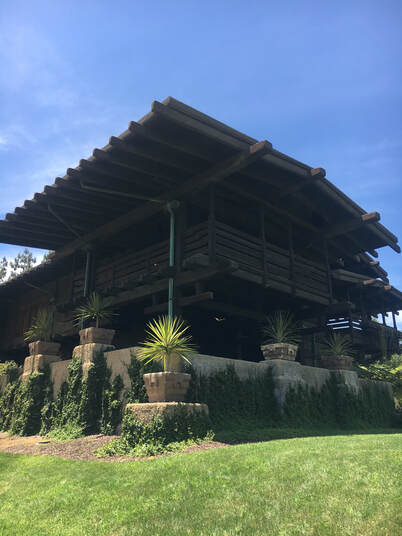 The Gamble House, Pasadena. Exterior, view from side. Note the Japanese influence. The Gamble House, Pasadena. Exterior, view from side. Note the Japanese influence. The Gamble House: Architecture as Fine Art — The Gamble House, promotional postcard The Gamble House in Pasadena is ranked one of ten best houses for design by the Los Angeles Times. Reviewers on Trip Advisor and Yelp give it a solid four and half stars out of five. After visiting, I agree it’s a pretty cool house. It’s gorgeous features like the stained glass door, custom built furniture, wood panels with reliefs, and the Japanese influences inside and out are impressive; it’s also what visitors rave about. But it’s far from light and airy; its wood-laden interiors create a dark, almost cave-like experience. It’s a ‘symphony of wood’, according to numerous descriptions, but wood of ‘quality as much as quantity’. Yet despite the darkness, it’s impressive. Following is a review of the Gamble House itself, the tour, and the pictures I took during my visit. History The house was custom built for Mary and David Gamble (of Proctor & Gamble—think Tide laundry detergent) by Greene & Greene brothers, two architects of Los Angeles who were known for their unique designs and Craftsman style bungalows. The Gamble House, though sometimes referred to as a bungalow, is not with its two floors above the first (bedrooms on the second and a games room on the third). The Greene brothers had a creative approach to home design, they seemed to behave more like artists than architects—they were known for treating blueprints as starting points for design, not the end game. They worked with local contractors, the Hall brothers, who executed Greene & Greene’s artistic designs meticulously, including in the case of The Gamble House, the gorgeous lead glass front door, reliefs on wood paneling, and custom furniture that mirrors the house design elements. The Gamble House was the family’s winter residence beginning in 1909. The family lived in Ohio and came to Pasadena in the winters to avoid the cold weather. Pasadena was a popular spot in the early 1900s for snow birds, people with money, wanting to get away from harsh winters in the East. Though the house took less than a year to build, the furniture took longer—the furniture wasn’t done until 1910. The Arts & Crafts Movement The house is internationally recognized for its design; it’s considered a masterpiece embodying the Art & Crafts movement that was popular in the United States at the turn of the century. The movement began in Britain, as a response to the perceived decline of craftsmanship due to factory produced goods that emerged during the period of industrialization. The Greene brothers were also influenced by the Japanese architectural styles they had seen on display at the 1893 World Fair in Chicago that represented nature, simplicity and beauty. Greene & Greene’s signature design style thus incorporated both the Arts & Crafts movement and Japanese aesthetics, with artistic designs that used natural materials, embellishments and engravings, as well as building designs that included extensions of indoor living to the outdoors via large patios and porches. Everything in the home, cabinetry, wood paneling, rugs, lighting, furniture and the spectacular front door was custom-designed by the Greene brothers. The house stayed in the family until 1966, after which it was turned over to the City of Pasadena and University of Southern California. The house was designated as a National Historic Landmark in 1978. Highlights Of all the things in the house, I liked the bedspreads the best. Yet they’re not the originals, (not surprising given textiles deteriorate at a faster rate than more dense materials, like wood) but the spreads are ‘close’ to the originals according to the docent, and were replaced sometime after the house was turned over to the city of Pasadena (1966). The spreads are creamy, textured and fringed with gorgeous tassels (pic below), they add a softness to the house which it lacks due to the ‘harder’ materials. For instance the guest beds which the spreads were on, are made of nickel, and according to the docent, were custom carved with floral designs. They looked like hospital beds to me; but the bedspreads rescued them from the frames’ coldness. My other favorite part was a porch off one of the bedrooms that overlooked the backyard; it’s an enormous, covered porch with a view of the green and lush back garden (see slideshow below) including the fountain. It felt cosy—like a cool, airy room. I could imagine having a comfortable lounge chair with an adjacent side small table to rest a cup of coffee or glass of wine. The only wood in sight were the beams above, which apparently had been recently restored. The Tour The Gamble House offers a variety of guided tours; which is the only way you can view the interior of the house. I took the most popular; the hour long docent-led tour for $15. It was quite good; the docent was informative and knowledgeable, though it felt a bit like a school tour, with the tour being introduced by a docent (who was not our tour-docent) laying down the rules—no touching, no flash, stay with the tour, no going into empty rooms (?)…okay. The tone was set—the tour was passive for the most part. It felt like we were a group of herded sheep going from room to room (there were other docents guiding us along the way to make sure we stayed on task). Granted, I learned more than I might have had I just perused the images and information online. Overall, the Gamble House is an interesting and worthwhile destination for those interested in architecture, home design or the Arts & Craft movement. For others, you may want to skip it and watch the video walkthrough in the link below, and/or peruse the many pictures available on the web (use ‘The Gamble House Pasadena’ for the search terms) including my pictures (below). I’ve also listed some links to articles with more Gamble House details. Enjoy! More
|
Museums for Real is a blog with insights and ideas on how to make museums relevant and enjoyable for everyone.
|
